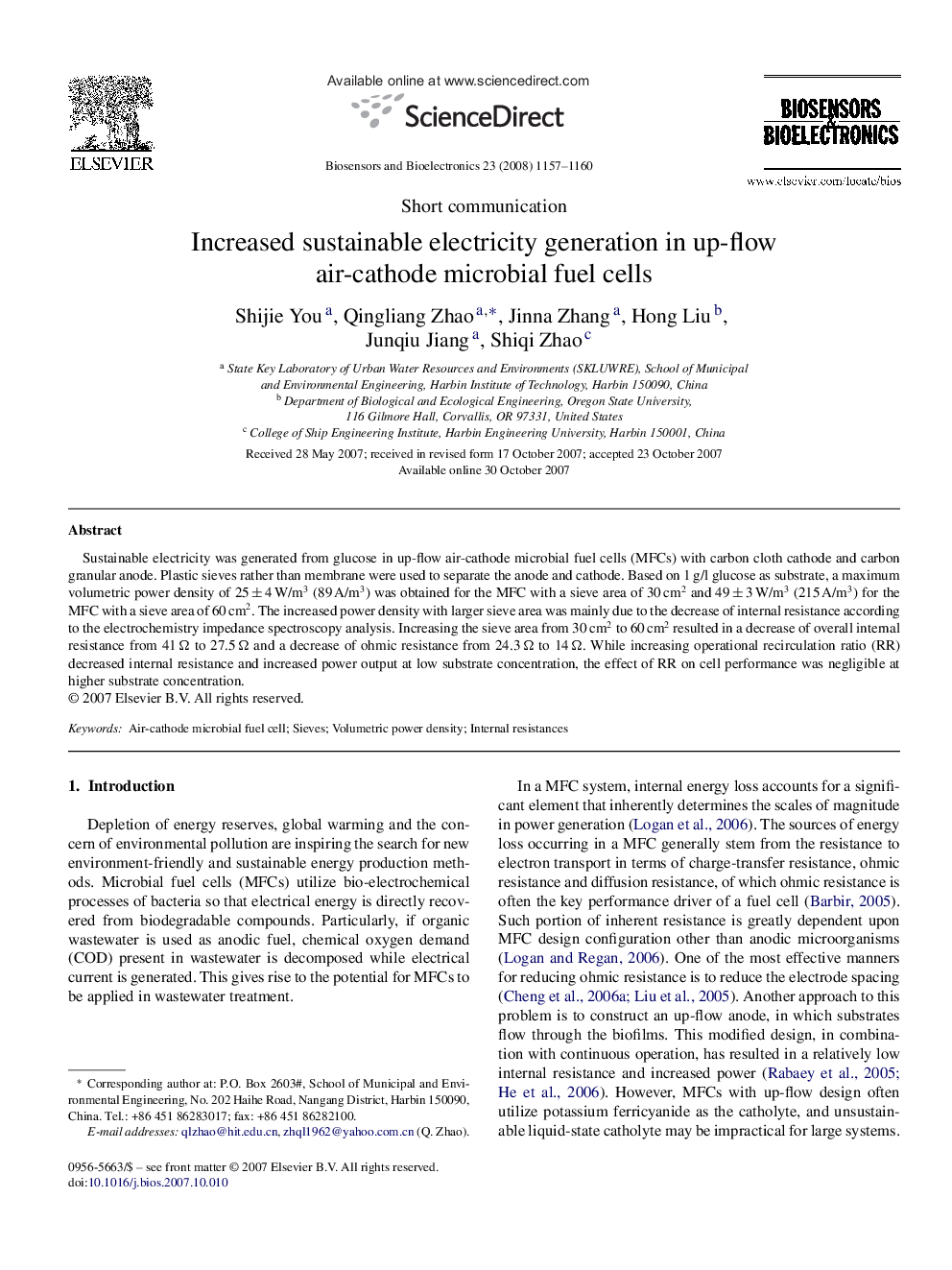| Article ID | Journal | Published Year | Pages | File Type |
|---|---|---|---|---|
| 869538 | Biosensors and Bioelectronics | 2008 | 4 Pages |
Sustainable electricity was generated from glucose in up-flow air-cathode microbial fuel cells (MFCs) with carbon cloth cathode and carbon granular anode. Plastic sieves rather than membrane were used to separate the anode and cathode. Based on 1 g/l glucose as substrate, a maximum volumetric power density of 25 ± 4 W/m3 (89 A/m3) was obtained for the MFC with a sieve area of 30 cm2 and 49 ± 3 W/m3 (215 A/m3) for the MFC with a sieve area of 60 cm2. The increased power density with larger sieve area was mainly due to the decrease of internal resistance according to the electrochemistry impedance spectroscopy analysis. Increasing the sieve area from 30 cm2 to 60 cm2 resulted in a decrease of overall internal resistance from 41 Ω to 27.5 Ω and a decrease of ohmic resistance from 24.3 Ω to 14 Ω. While increasing operational recirculation ratio (RR) decreased internal resistance and increased power output at low substrate concentration, the effect of RR on cell performance was negligible at higher substrate concentration.
